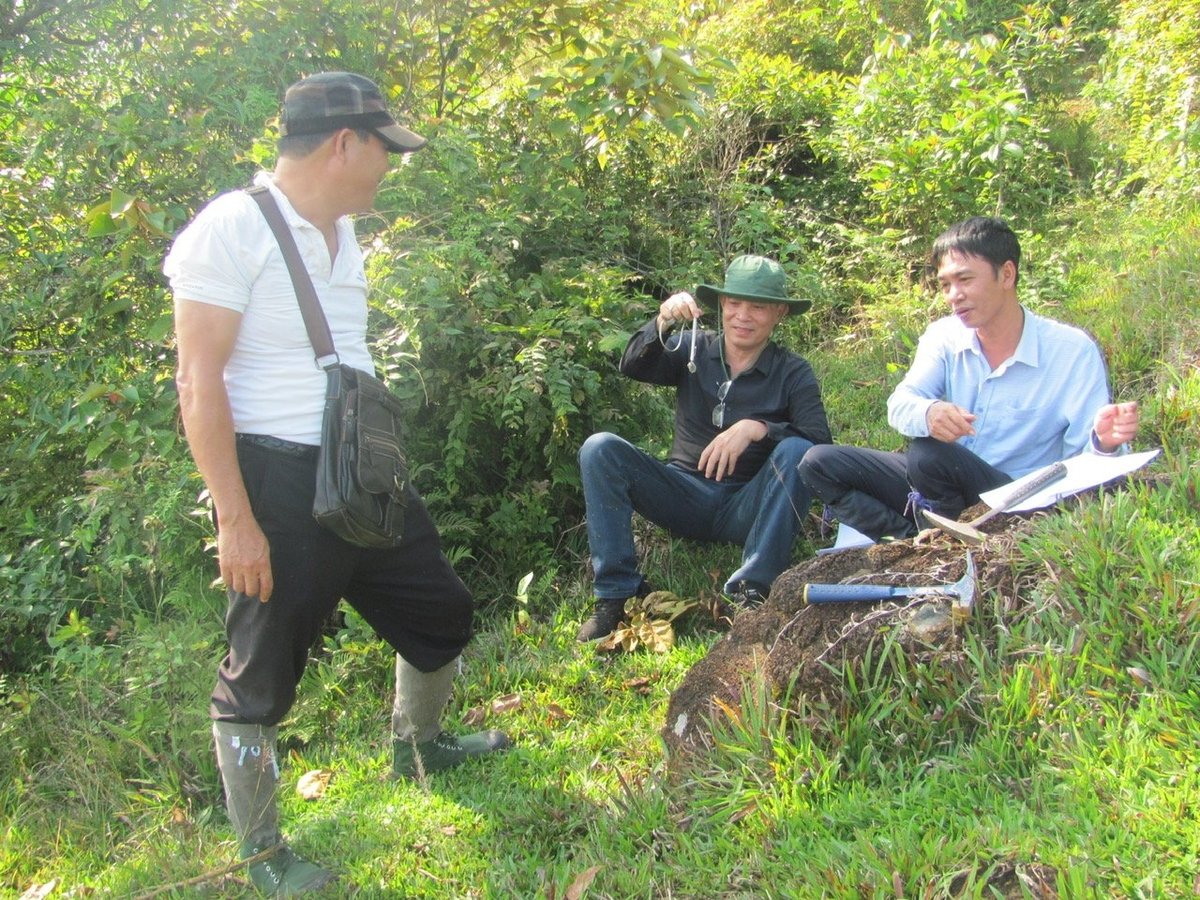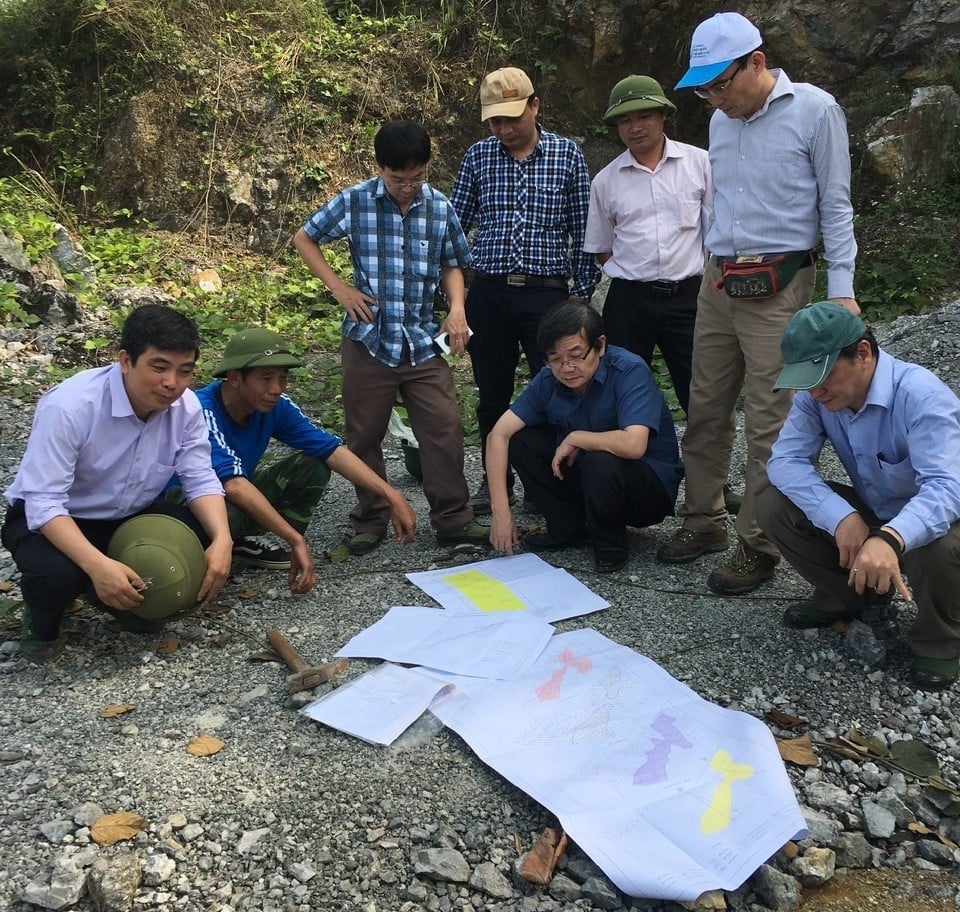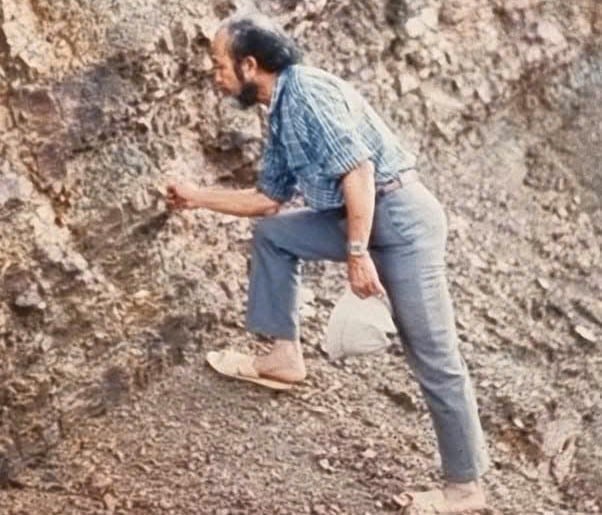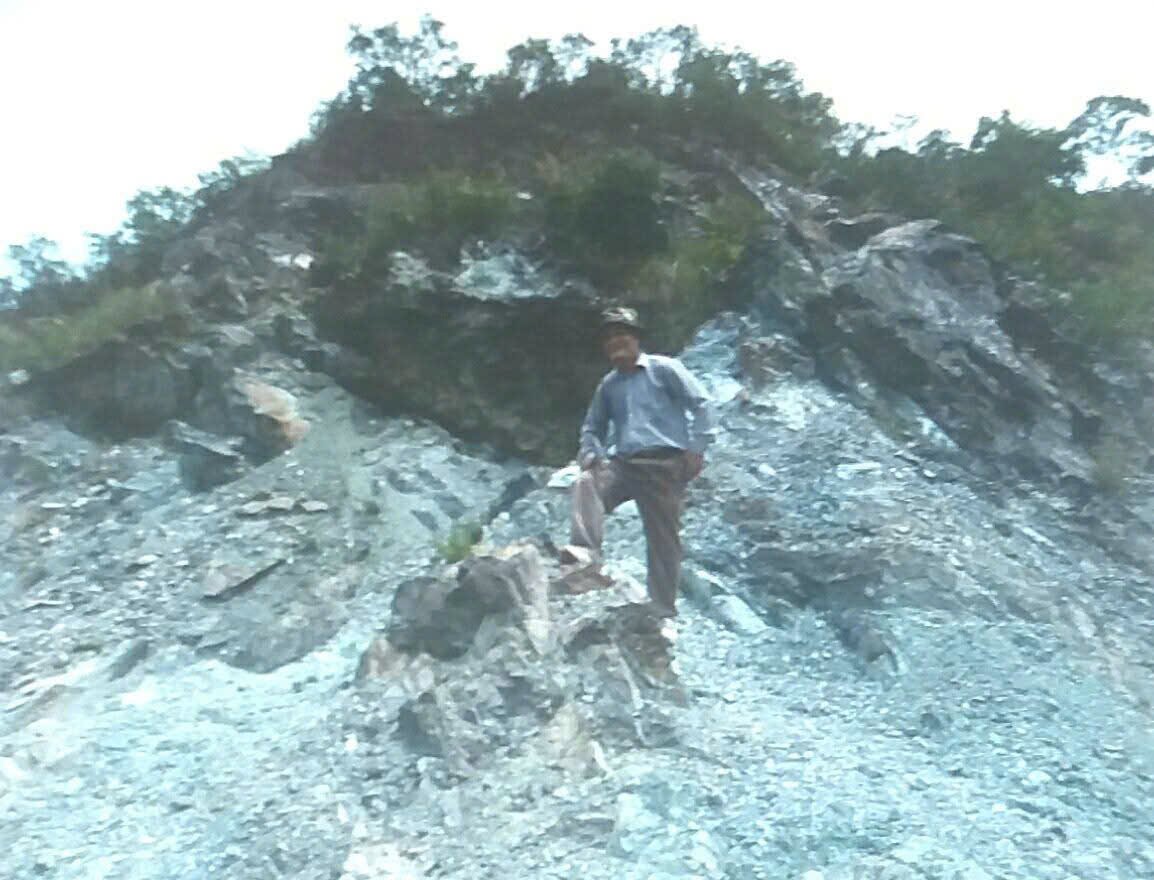November 11, 2025 | 06:15 GMT +7
November 11, 2025 | 06:15 GMT +7
Hotline: 0913.378.918
November 11, 2025 | 06:15 GMT +7
Hotline: 0913.378.918
From 1945 to the present, through many generations of staff and scientists, the geology sector has become a pioneering force in seeking, discovering, and assessing mineral resource potential. In surveying and exploration alone, the sector has identified thousands of mineral sites and assessed the potential of more than 60 different minerals. Among these, assessments of the potential and partial reserves of ten large and very large-scale minerals (excluding oil and gas) are considered landmark achievements, laying a solid foundation for socio-economic development and ensuring strategic raw material security for the nation.

Dr. Nguyen Van Nguyen, former Deputy Director of the Vietnam Geological Department (in the middle), together with geologists conducting a field inspection of nickel ore in former Ha Giang. Photo: Lan Chi.
Immediately after 1955, nationwide mineral surveying and exploration programs were deployed. As a result, the geology sector has identified over 60 types of minerals and more than 5,000 mineral sites across the territory. This comprehensive “mineral map” clearly reflects national resource potential, providing a scientific basis for mining industry planning and other economic sectors.
Notably, around ten mineral types or groups of medium to very large scale have become pillars of the country’s industrial base. First is ilmenite mineral sands in grey and red sand layers, distributed along the coast from Mong Cai to Vung Tau, with resources and reserves totaling nearly 423 million tons, including about 50 million tons of reserves, placing Vietnam among the world’s leading suppliers of this resource, with extraction volumes exceeding 1,450 thousand tons (according to the US Geological Survey, January 2025). This is a strategic input for aviation, space, manufacturing, and advanced materials.

Geologists surveying a lead-zinc ore site in Lao Cai. Photo: Lan Chi.
Second is bauxite, concentrated in the Central Highlands. With refined ore resources and reserves of about 3.1 billion tons, it ranks third globally after Guinea and Australia. This mineral is classified within the “climate-critical minerals” group. It forms the foundation for Vietnam’s alumina-aluminum industry, whose products join global supply chains and open new regional economic development pathways.
Third is coal, mainly located in Quang Ninh and Thai Nguyen. It plays a vital role in energy security and makes significant budget contributions.
Fourth is rare earths, which are strategically significant for producing high-tech equipment, renewable energy, batteries, and permanent magnets.
Fifth is apatite-phosphorite, concentrated in Lao Cai province. This serves as a primary raw material for fertilizer production, not only supporting agriculture today but also expected to be a key input for Lithium-Iron-Phosphate (LFP) batteries for electric vehicles in the coming years.
Sixth is white sand, found in northern coastal provinces (Quang Ninh, Nghe An) and central regions, notably Quang Tri (formerly Quang Binh and Quang Tri), Hue City and Da Nang City (formerly Quang Nam). Its resources and reserves exceed 8 billion tons, making it a precious mineral for the glass and optical industries, and indispensable in solar panels and smartphones. Vietnam’s high-end processed silica sand products now participate in global supply chains through top-quality silica plants in Hue and Da Nang under Viet Phuong Group.

Distinguished geologist Vu Khuc surveying an outcrop. Photo: Mai Anh.
Seventh is white marble, with substantial reserves in Yen Bai and Nghe An. It is used for construction materials like tiles, crafts, and industrial minerals.
Eighth is iron, distributed across many localities, forming the foundation for metallurgy and mechanical industries.
Ninth is the copper-lead-zinc group, concentrated mainly in northern mountainous provinces. It contributes to non-ferrous metallurgy and alloy industries.
Tenth is gold, which is widely distributed and highly valuable economically.
Additionally, carbonate stones are concentrated in northern provinces such as Ninh Binh (including former Ha Nam, Ninh Binh), Thanh Hoa, Nghe An, Son La, and Quang Ninh, Hai Phong, offering extremely large resources that have supported Vietnam’s cement industry in recent decades, playing an instrumental role in national construction.
The discovery and assessment of these mineral reserves help Vietnam secure strategic supply and elevate its position on the regional and global mineral map.

Labor Hero, Head of the Southern Mapping Federation, and distinguished geologist Nguyen Xuan Bao surveying a geological heritage site in Hiep Duc (former Quang Nam province). Photo: Mai Anh.
Dr. Nguyen Van Nguyen, former Deputy Director of the Vietnam Geological Department and someone closely associated with the sector for nearly 40 years, noted that 80 years of mineral surveying achievements carry not only scientific and technical value but also tangible contributions to sustainable development. The geology sector has proven its dual role: leading in providing scientific data for industry and agriculture, and playing a critical part in resource and environmental protection.
Reflecting on this 80-year journey, Dr. Nguyen emphasized that Vietnam’s geology sector has contributed enormously to the nation’s construction and development. Achievements in surveying and exploring ten large-scale minerals are bold marks reflecting the intelligence and steadfastness of many geological professionals. These results have not only laid the groundwork for the mining industry but are also intricately tied to agriculture, the environment, and the national sustainable development agenda.
“Today, as the country enters a new era of industrialization and modernization, the geology sector has a new mission: to build on 80 years of legacy while collaborating with socio-economic sectors towards sustainable development. This is not only a source of pride from the past, but also the motivation for the geology sector to continue writing new chapters in the nation’s future,” asserted Dr. Nguyen.
Translated by Huong Giang

(VAN) Numerous practical ideas, solutions, and proposals were presented at the national forum themed: ‘Rural Tourism Connected with Ecological Civilization and the Creation of a Green Living Environment.’

(VAN) TH Group is implementing multiple solutions to reduce white pollution, notably through the 'Collect Cartons - Spread Green Living' campaign and plastic reduction initiatives.

(VAN) Assoc. Prof. Dr. Nguyen Ngoc Son, a full-time National Assembly deputy serving on the Committee for Science, Technology and Environment, emphasized that agriculture and environment play a strategic role in the green era.

(VAN) Integrated management is the “key” to turning the immense potential of the sea into a driving force for national development, ensuring security, defense, and green, sustainable growth.

(VAN) Viet Nam’s hydrometeorological sector is undergoing strong innovation, aiming for modern, sustainable development and proactive disaster management.

(VAN) Viet Nam is accelerating its conservation efforts for nature and biodiversity, striving for green development, effective management, and community engagement to ensure the sustainable preservation of vital resources.

(VAN) The strengthened cooperation between two organizations, after 30 years of presence in Viet Nam, reflects a long-term commitment to a future where people and nature live in harmony.